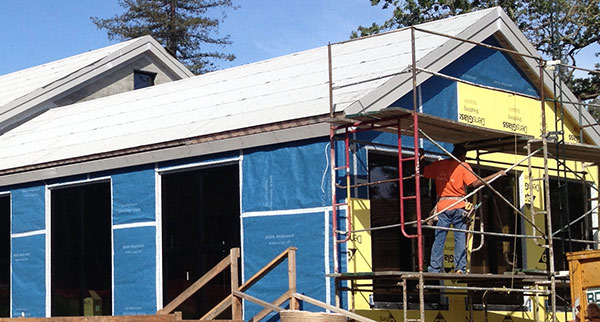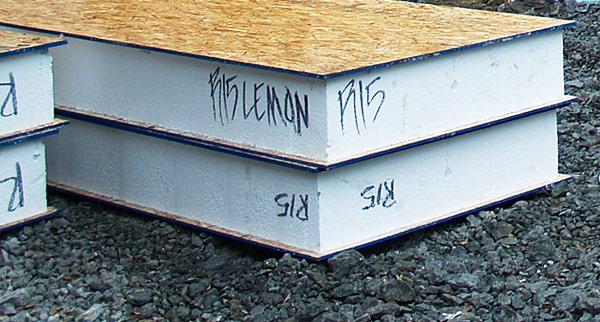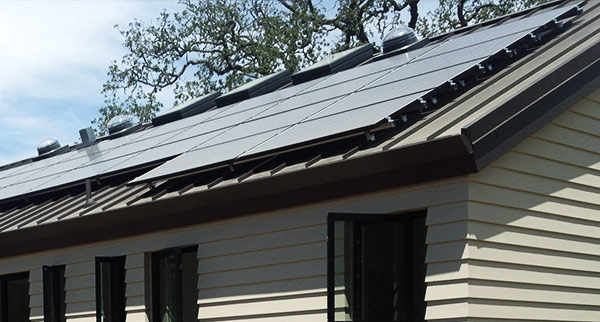These resources are from an archived version of our website. Want to see what we’ve been up to lately? Check out our new website.
High-performance building technologies to adopt now
There is a movement across the country toward building more sustainable, energy efficient and cost-effective homes. The Office of Energy Efficiency & Renewable Energy (EERE) leads a number of initiatives for homebuilders focusing on high-performance building techniques and materials. As an awareness of the value of high-performance building grows, we’re seeing these initiatives being adopted into local jurisdictions’ building codes. In California, a 2020 net zero energy goal pushes building codes closer to that goal at every price point – not just luxury homes.
This awareness is driving consumer demand, innovation, and adoption across the residential construction market. Quality builders are moving away from traditional “stick-built” homes and adopting a whole-house systems approach to construction. From air barriers to duct-work, advances in home construction are meeting today’s greater expectations for performance and comfort. Look for these high-performance innovations when purchasing or building your next home.

Tighter Building Envelopes
The high-performance builder’s mantra is “build tight, ventilate right.” A super-insulated and tight building envelope provides acoustic privacy in addition to elevating the home’s heating and cooling efficiency. What’s inside the walls also makes a big difference in how a house performs against the elements, including the most invasive one – moisture. The modern homebuilder’s toolkit contains these high-performance products:

- Structural Insulated Panels (SIPS): SIPS are a panelized wall system that are structurally insulated. They can comprise the entire exterior building envelope. SIPS create structures that use roughly half the energy of similar, code-built stick-frame buildings. SIP built homes have air leakage rates 70% lower than standard built homes.
- Rainscreens: Why are brick buildings more durable? It’s not just the strength of the bricks. It’s because they have an air gap between the brick and the interior wall. Water that migrates through hits this air space and drains or dries before causing water damage. High performance homes can include a ventilated rain screen to increase the drying capacity of wall assemblies.
- Moisture Barrier: Different from the standard air barrier (like Tyvek), a moisture barrier is an elastomeric acrylic-based product. This liquid applied barrier seals to all the fasteners in your cladding to reduce or remove all air infiltration. When these barriers are combined with an additional layer of insulation on the exterior of a home, this will further reduce any avenue for heat energy loss.
- Mechanical Ventilation: When a building envelope is built to high-performance or passive home standards, proper ventilation is critical. Fresh air delivery, air filtration and heat recovery ensure healthy air and optimum energy conservation. The sophisticated Zehnder Heat Recovery Ventilator System (HRV) can exchange interior air nine times a day, running on only 16 watts of power.
More Efficient Heating and Cooling
No pun intended, but the demand for solar energy is heating up. The amount of solar power installed in the U.S. increased 23 times from 2008 to 2015 to an estimated 27.4 GW. That’s enough energy to power the equivalent of 5.4 million average American homes. California’s Mojave Desert is home to Ivanpah Solar Power Facility, the world’s largest operating solar thermal energy plant. As prices continue to fall, solar energy is increasingly becoming an economical energy choice for American homeowners and businesses. Harnessing the power of the sun in your modern home, and moving that warmth around efficiently is the focus of these sustainable building techniques:
- Solar Thermal System: This system offsets 80% of the energy needs for heating the home’s water and up to 50% of the home’s demand for its space heating – working in tandem with a home’s HRV. Water is heated on the roof from the sun and then is stored, maintaining a consistent temperature.
- Solar Electric System: Today, solar electric systems are most often connected to the power grid, offering homeowners a reciprocal agreement with local utilities. When a home produces more energy than needed it, can be sold back to the power company. In California, additional incentives are offered through the California Solar Initiative. Solar systems are constantly evolving to become even more economical and efficient.
- High Performance Ducts: Traditional duct insulation is not built in accordance with a whole-house systems approach to design. It is generally added as an afterthought and housed in un-conditioned or un-insulated attic space. Newer thinking on energy efficient insulation of duct work includes a buried duct system which includes increased insulation and seam sealing
The strategies we’ve outlined above are just the beginning of your journey to a more sustainable future. To learn even more about what goes into a high-performance home, check out Clarum’s High-Performance Home Building Guide.
Want to learn more about how Clarum can help you build the modern home of your dreams? Give us a call at 650.322.7069









